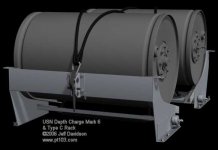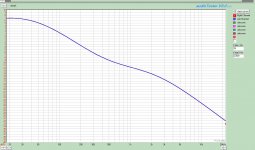@Salas
Wich will be the best Idss value for njfet don't matched Q6 2SK170?
I don't need the information: selected when matched voltage LEDs string😉
P.S. Finally 4 LEDs each string, no diodes used.
@Salas
Wich will be the best Idss value for Q3 BC550C?
I have following Idss:
535
536
.....
I need 4 transistors for 4 channels
That is hfe. No special consideration. Just some near ones in the mid 500s will do nicely.
Thanks a lot. Another question, didn't find the Rdson from the SK170 and SK359 in the data sheet, can you provide it to me.
That they give in Mosfets. Statically a 2SK170BL has around 40 Ohm between drain and source. Jfets are depletion, normally on.
matching procedures for RIAA filter capacitors?
Hello,
The level of reported precision reported for the selection of 2SK170’s, BC550C’s and LED strings down to the milivolt is curious. Hopefully it bears fruit and is not just an exercise. Matching RIAA curves, gain and noise as shown in the posted FFT graphs seems to be evidence that matching effort pays off.
I am waiting for 1% Vishay capacitors to install in the RIAA filter section of the CCT. Are there any matching procedures for the capacitors? I bought 20 of each value. There seems to be more opinion and possibly snake oil regarding capacitor preference. Listening impressions rather than test results.
Presently my goal is to construct a reference RIAA stage without extreme expenditure for parts, and then upgrade the items with the most impact for the least money.
DT
All just for fun!
Hello,
The level of reported precision reported for the selection of 2SK170’s, BC550C’s and LED strings down to the milivolt is curious. Hopefully it bears fruit and is not just an exercise. Matching RIAA curves, gain and noise as shown in the posted FFT graphs seems to be evidence that matching effort pays off.
I am waiting for 1% Vishay capacitors to install in the RIAA filter section of the CCT. Are there any matching procedures for the capacitors? I bought 20 of each value. There seems to be more opinion and possibly snake oil regarding capacitor preference. Listening impressions rather than test results.
Presently my goal is to construct a reference RIAA stage without extreme expenditure for parts, and then upgrade the items with the most impact for the least money.
DT
All just for fun!
If you got any trusty, better than 1% LCR bridge you can match them down to 0% between them and against the CCT values, as far as the bridge goes I guess. Can't do anything possibly better. Here's a Riaa curve to know your target if you got any FFT means to check it out later on. Not that's sure its precise on the production of all vinyl out there, but to do our part right.
Attachments
Capacitor Matching
Salas,
Thank you.
Our part will be as close as we can get it. I will study and take a stab at the bridge matching of capacitors. The FFT is ready to go.
Perhaps I can breadboard with the capacitors and run the FFT until the two stereo channels match.
Good thing time is not money!
DT
All just for fun!
Salas,
Thank you.
Our part will be as close as we can get it. I will study and take a stab at the bridge matching of capacitors. The FFT is ready to go.
Perhaps I can breadboard with the capacitors and run the FFT until the two stereo channels match.
Good thing time is not money!
DT
All just for fun!
Your time and enthusiasm sets the precision goals. Its not an auto gain controlled loop NFB CCT, and it has a Riaa EQ inside, I guess if you wanna be precise it gives a good excuse in this case.
Mundorfs SGO in action
Mundorfs Silver Gold Oil output in action:
Just for fun.
Mundorfs Silver Gold Oil output in action:
An externally hosted image should be here but it was not working when we last tested it.
Just for fun.
DT you have the right attitude. I built version one with 5% Wima's, I just matched them. Then changed parts out later for better polystyrene and teflon ft-3's. The boutique parts will help voice the system to match better the rest of your stereo.
Matching is important in this excersize and is part of the fun. You can get fantastic results by taking time to do it.
The attached chart is my Simplistic RIAA response curve. Both channels are plotted if you look close. 1V= 0dBS. That doesn't come from randomly pulling parts out of the bin. The rest is musical bliss.
FYI. Just finished installing last parts on the version 1.2 shunt regulator and will fire it up later tonight when I make the test leads and have a chance to review my work a little closer. Hopefully the magic smoke stays in the package.
Matching is important in this excersize and is part of the fun. You can get fantastic results by taking time to do it.
The attached chart is my Simplistic RIAA response curve. Both channels are plotted if you look close. 1V= 0dBS. That doesn't come from randomly pulling parts out of the bin. The rest is musical bliss.
FYI. Just finished installing last parts on the version 1.2 shunt regulator and will fire it up later tonight when I make the test leads and have a chance to review my work a little closer. Hopefully the magic smoke stays in the package.
Attachments
Good luck later on. If you centre those graphs like in the textbook Riaa chart in post #4766 do they come near?
Will re measure next time with the graphs centered. Just saved the png file last time so difficult to replot. It does extrapolate pretty close.
Before I remeasure, I want to finish the v1.2 and have the second r-core for full dual mono.
Before I remeasure, I want to finish the v1.2 and have the second r-core for full dual mono.
Well better luck on v1.2 tomorrow. 1 brd won't light the LED. have 0.625V at load. Q4 stays stone cold but Q1 generates a small amount of heat. Need to make sure I have d1 in correctly.
The second brd lets the magic smoke out of R1. (Instantly) Need to pull the caps off and get out my 3x reading glasses and get personal with the board. Obviously I have a whisker somewhere or a cold joint.
The second brd lets the magic smoke out of R1. (Instantly) Need to pull the caps off and get out my 3x reading glasses and get personal with the board. Obviously I have a whisker somewhere or a cold joint.
That they give in Mosfets. Statically a 2SK170BL has around 40 Ohm between drain and source. Jfets are depletion, normally on.
Thanks again. Do you have the rds(on) from the sk369 as well?
Another question. Have you tested of using a current source in source of the first stage instead of cascading it and what result?
No, I haven't used that jfet so I haven't examined it. A current source would not help with Miller, only with PSRR so it was not an option given my goals for the input stage.
- Home
- Source & Line
- Analogue Source
- Simplistic NJFET RIAA


